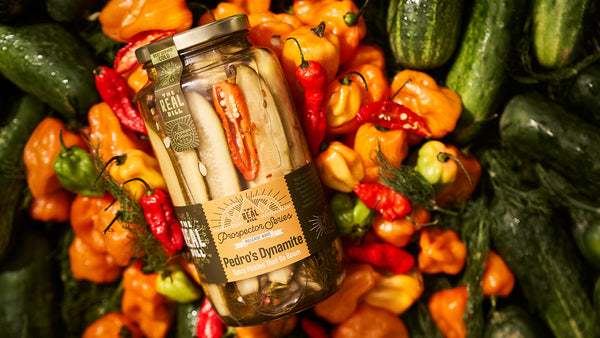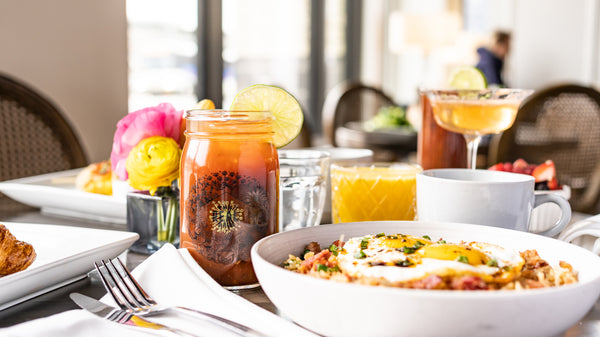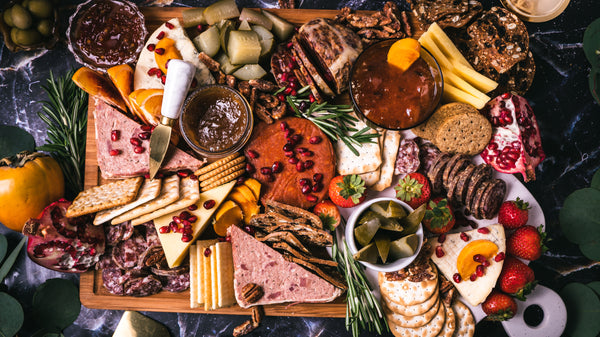Introducing Vindaloo Curry Pickles

Throughout the years, we have enjoyed creating new recipes and experimenting with unconventional ingredients to develop pickles that are unlike any others on the market. Although we do love classic dill pickles, at the heart of it, we are culinary trailblazers with the mission to challenge ourselves to reimagine what has been done before. While some flavors have proven to be more successful than others (RIP Guajillo Lime pickles that now reside in the flave-yard) we are always striving to flex our creativity and ingenuity in the kitchen. We created The Passport Series, which features four extremely limited annual pickle releases that explore distinctive flavors from cuisines around the world, as a means to accomplish this goal. Each release is available once per quarter, every year. These products are extremely limited in availability and made with unique and specialized ingredients.
We believe that food has the ability to transport us, taking us on a journey around the globe. The Passport Series was designed for the curious culinary explorer who wishes to go beyond traditional dill pickles. None of the pickles in The Passport Series contain dill or conventional flavors. Since launching this new, limited series earlier this year, we have released Thai Chile Ginger in Quarter 1, Ethiopian Berbere Spice in Quarter 2, and Spicy Caribbeans in Quarter 3. For our fourth and final release, we are excited to debut Vindaloo Curry.
Vindaloo is known as a heavily spiced and colorful Indian dish. It contains everything a food lover craves: heat, tang, sour, sweet, and loads of flavor. In modern form, meat such as pork, goat, lamb, or chicken, is marinated in vinegar and garlic and mixed with tomatoes, caramelized onions, potatoes and tons of powerful, fragrant curry spices including paprika, ginger, coriander, turmeric, mustard powder, cumin, cinnamon, cloves, and lots of dried red chile peppers. The results are intensely spiced, colorful, bright, acidic, and warm, and the flavors cater to all five tastes, sweet, bitter, sour, salty, and umami (or savory). Vindaloo has a palette of flavors in every bite.
Even though vindaloo is as popular as naan and tikka masala when it comes to Indian food, many do not know its beginnings. Vindaloo receives its name from the Portuguese dish carne de vinha d'alhos, which means meat marinated in wine and garlic. Vindaloo made its way to India in the 15th century when Portuguese explorers entered Goa and brought carne de vinha d'alhos with them to this uncharted region. The Portuguese used a unique marinade of red wine, which turned to vinegar over time, salt, and garlic to preserve their meat in barrels and amplify its flavors. Due to this preservation process, explorers could sustain themselves off of this meat for months as they sailed across the ocean.
When the Portuguese arrived in South India, they did not have access to vinegar or red wine, as it was not native to the Indian region, so they made vinegar from palm wine and added tamarind and garlic to recreate traditional Portuguese flavors found in carne de vinha d'alhos. Through this dish, the Portuguese introduced vinegar to South India. Yet their influence did not stop there. The Portuguese also brought pineapples, tomatoes, and most importantly, red chiles to the region. Soon after, Goans started growing red chiles, which quickly became a staple in Indian food and on the Indian spice trade. Over time, carne de vinha d'alhos was altered to accommodate the local Goans' taste buds by adding palm vinegar, dried red chiles, and additional, traditional Indian spices to the dish. Ultimately, "vinha d'alhos" became known as "vindaloo". Vindaloo exemplifies "East-meets-West" cuisine. To this day, vindaloo and dried red chiles are quintessential to Indian cuisine, representing the legacy of Portugal's global empire.
In the 16th and 17th centuries, Vindaloo's popularity grew as Goa's Portuguese Catholic missionaries traveled around India, and vindaloo was later introduced to the British when they colonized India in the 1800s. The British imperialists loved vindaloo so much that they made it a worldwide export. Vindaloo is now enjoyed across the globe from America to Hong Kong thanks to British Indian influence and the booming tourist industry in Goa. Every region has its own take on this Indian food staple. Authentic, traditional vindaloo is a thick, dry curry bursting with vivid flavors. The original recipe is simply meat, usually pork, marinated and simmered in vindaloo paste. In British and American restaurants, tomatoes, potatoes, and onions were added to tone down the heat. While vindaloo is known as another hot curry in Western culture, in Goa, vindaloo holds on to its earthy, vinegary foundation.
Much like pickles, vindaloo is a creation born from preservation. Its foundation is built on vinegar and sour, spicy, and sweet elements. Some say, the key to perfect vindaloo stems from finding the right balance between acidity, sweetness, and the strong spicy flavors. This is a familiar notion at The Real Dill and something we aim to accomplish in each of our products. When we were brainstorming the fourth installment of The Passport Series, vindaloo was an ideal inspiration.
When we think of vindaloo, we think of a celestial dish that impressively showcases both power and depth in a beautifully complicated composition. Although vindaloo gained its global popularity and recognition from the British version, it is often criticized for being overly spicy; a detriment to the complex flavors in the most authentic versions. We made an effort to stay true to the original versions by keeping the heat at a level that didn't interfere with the intricate and noteworthy flavors. Our Vindaloo Curry pickles are a harmonious blend of the fragrant, pungent, earthy flavors from this Indian food staple. Like traditional vindaloo, our Vindaloo Curry pickles are an eruption of flavor, yet they magnificently balance sour, sweet, spicy, and heat in every bite. In this recipe, we used traditional vindaloo spices such as ginger, cinnamon, cayenne, turmeric, cardamom, mustard seed, coriander, cloves, and black pepper. We added cilantro in place of dill and lime leaf to amplify vindaloo's brightness. While Vindaloo Curry pickles are not as fiery as vindaloo found in restaurants, we used serrano peppers for a spicy kick.
When it came time to design the Vindaloo Curry label, we drew inspiration from the spirited and energetic Indian culture. In the design, you will see a majestic elephant draped in a colorful sari made up of intricate designs. In Indian culture, elephants symbolize power, wisdom, strength, and luck. The elephant's trunk is holding a balti dish, which is traditionally used to serve marinated meats, vegetables, and spices. The balti dish on the label is full of turmeric, limes, and cilantro, which are the main flavors found in Vindaloo Curry pickles.
We hope that our Vindaloo Curry pickles transport you to the tropical, heavenly, exotic shores of South India and that they are as vibrant as vindaloo's origin story, which pays homage to the dish's rich, colorful heritage.
Vindaloo Curry pickles are now available online and in select retail stores for a limited time. As all of the releases in The Passport Series, once they are sold out, Vindaloo Curry will not be back in stock until Quarter 4 of 2021.
Click here to view the Vindaloo Curry retail locator page to find Vindaloo Curry pickles in a store near you.



